- Home
- Carl Sagan
Comet Page 10
Comet Read online
Page 10
The starry heavens above and the moral law within fill the mind with ever new and increasing admiration and awe.…
Edmond Halley had predicted that the Comet of 1682 would return at the end of 1758. It is easy to see why his prophecy caused little excitement at the time; 1758 was then more than half a century in the future. When Halley died in 1742, his obituaries made no mention that he had predicted the return of a comet. Instead, his voyages of exploration and the diving bell he invented were given great attention.
But by 1757 there were those who had become obsessed with the idea that the gravitational physics of Newton could actually be used to foretell the future. Among them was Alexis Clairaut, an eminent French mathematician who had published his first paper at the age of thirteen. He made a last-minute decision to try to improve on Halley’s tables on the orbit of the Comet of 1682, and the predicted time of its return. It was imperative, of course, that the revised prediction appear before the comet did, “so that no one might doubt the agreement between the observation and the calculations.” But the comet was fast approaching and the task was enormous, requiring meticulous calculation of the gravitational interactions of Jupiter, Saturn, the Earth, and the comet over a period of 150 years. Clairaut claimed that he engaged the astronomer Joseph Jerome de Lalande to help him. To hear Lalande tell it, it was the other way around. But Clairaut made no public mention of the third member of the team, without whom—as Lalande was later to admit—they would never have dared to attempt to beat the comet; it was she who deserved much of the credit.
Nicole-Reine Etable de la Brière Lepaute. Portrait by Guillaume Voiriot. Courtesy Michel-Henri Lepaute.
We can only imagine the forbearance that Nicole-Reine Etable de la Brière Lepaute needed to get through her remarkable life. It was an age when upper-class women were valued for their appearance, their ability to oversee the running of the household, and their capacity for lively small talk. Madame Lepaute fulfilled these ideals, but she was also a first-rate mathematician. In this regard, she posed a problem for her colleagues that is made clear by Lalande’s tribute to her in his Astronomical Bibliography. Writing soon after her death in 1788, he goes to great lengths both to exalt and to belittle her. Yes, she was vital to their work on the comet, but she was not pretty enough (see this page). Yes, her tables of parallactic angles and her accurate prediction for the whole of Europe of the annular eclipse of 1764 were important, but, no, she herself was significant mainly in terms of her male relatives. He will give her this much: “Her calculations never got in the way of her household affairs; the ledgers were next to the astronomical tables.” For his part, Clairaut suppressed any reference to Mme. Lepaute’s contribution, “in order to accommodate a woman jealous of Mme. Lepaute’s merit, and who had pretentions but no knowledge whatsoever. She was able to have this injustice committed by a judicious but weak scientist whom she had subjugated.” Or such was Lalande’s view of the matter. Scientific biographies were racier then.
But despite his cavils, Lalande’s devotion to her is clear:
Mme. Lepaute was the only woman in France who acquired true insights into astronomy.… She was so dear to me that the day I walked in her funeral procession was the saddest I have spent since I learned of the death of my father.… The times I spent near her and in the heart of her family are those I am most fond of, the memory of which, mixed with bitterness and pain, spreads some comfort over the last years of my life.… Her portrait, which I still have before my eyes, is my consolation.
Lepaute must have had her hands full in 1757. With Clairaut and Lalande, she worked day and night, often through meals, for six months in a desperate race with the comet. The enterprise was so taxing, Lalande later wrote, “that following this forced labor, I contracted an illness which would change my temperament for the rest of my life.” Eventually they discovered that the comet would be detained by Saturn’s gravity by 100 days. Jupiter meant a delay of at least 518 days. In the course of their calculations, they found that Halley had made a set of compensating errors which canceled each other out, and concluded that Halley’s estimate of the time of the return was essentially correct.
In November of 1758 they predicted that the comet would achieve perihelion passage in mid-April 1759, and might be visible some months before. On Christmas Night, 1758, a German farmer—one Johann Palitzsch—became the first to know that the long-dead Edmond Halley had successfully employed Newton’s Laws to fortell the future. The comet was punctual, and it came from just the sector of the sky that Halley had foretold. Palitzsch, an avid amateur astronomer, one of many to make a contribution to cometary astronomy, rushed to tell the world. Halley’s prodigal comet had returned. It reached perihelion on March 13 of 1759, within a month of the Clairaut-Lalande-Lepaute prediction. Science had succeeded where generations of mystics had failed. Newtonian prophecy had been fulfilled.
Many soon recognized what Halley and his French successors had accomplished. They had established a program, a goal, an ideal for the future of all of science: “the regularity which astronomy shows us in the movements of the comets,” Laplace concluded, “doubtless exists also in all phenomena.”
*The full title was Universal Natural History and Theory of the Heavens, Or an Essay on the Constitution and the Mechanical Origin of the Whole Universe Treated According to Newton’s Principles—an ambitious mouthful, but Kant delivered.
CHAPTER 5
Rogue Comets
Thou too, O Comet, beautiful and fierce,
Who drew the heart of this frail Universe
Towards thine own; till, wrecked in that convulsion,
Alternating attraction and repulsion,
Thine went astray, and that was rent in twain;
Oh, float into our azure heaven again!
—PERCY SHELLEY, EPIPSYCHIDION, 1821
The triumphant return of Halley’s Comet in 1758 powerfully supported, in the minds of people all over the world, the Newtonian view that we live in a clockwork universe. In the predictable motion of the planets, and in the periodic apparitions of Comet Halley (and, later, its brethren), many people saw the hand of God. Seeking new comets and making preliminary determinations of their orbits became a fashionable pastime. In the time of the American and French revolutions, optimistically proclaimed “The Age of Reason,” the regular motions of the comets represented a continuing reminder of the gradual emergence of the human species from rank superstition, while at the same time the majesty and elegance of a Divine Purpose was considered evident in every cometary orbit.
As a larger sample of comets was examined, however, some odd idiosyncrasies and a disquieting departure from Newtonian regularity were uncovered. A class of short-period comets was found, circuiting the Sun once every few years, entirely among the planets in the inner solar system. For example, Comet Encke, discovered in 1786, comes once each orbit closer to the Sun than does the innermost planet, Mercury. In 1819, J. F. Encke was studying the repeated returns of the comet that now bears his name. Since the period is only 3.3 years, he had a number of orbits to contemplate. Encke found, to his considerable surprise, that in every perihelion passage the comet was arriving a couple of hours early—even after perturbations by Jupiter and the other planets were properly taken into account. Here was a substantial mystery, which Encke was destined never to solve. It put the new astronomy in an awkward position: comets had been touted as the proof of a precise and universal law of gravitation, but at least one comet chose not to play along. Even Newton could not make all the comets run on time. The phrase “defying the law of gravity” traces back to these times. The approach of most scientists of the day was that Newtonian gravitation was valid, although some additional force was here at play. But what?*
On February 27, 1826, a major in the Austrian army named Wilhelm von Biela found himself in South Africa looking up at the sky, whereupon he discovered what seemed to be a new comet. Ten days later, it was independently discovered in Marseilles by a French astronomer, Jean Feli
x Adolphe Gambart. Both calculated the orbit and deduced a period of a little under seven years. Both recognized that comets observed in 1772, 1805, and 1826 were the same body. An unpleasant and petty controversy arose between them over the priority of the discovery. Should it be called Comet Biela, or Comet Gambart? Meanwhile, Gambart (and others) made the disquieting prediction that his comet would strike the Earth on its next return, around October 29, 1832. Although the comet appeared on schedule, it did not impact the Earth. We can imagine some anxious moments, and for more reasons than one, around the Marseilles observatory in the fall of 1832.
On its next predicted perihelion passage, in 1839, the comet’s position in the sky at closest approach to Earth was very near the Sun, and in the glare no comet was seen. But the 1846 apparition was more favorable, and as astronomers peered through their telescopes in amazement, it was discovered that there was not one but two comets on almost identical trajectories, each with its own tail. During the next weeks their brightness varied, first one and then the other shining more brilliantly. For a while there was even a common coma enveloping both. The finding was so bizarre that the first astronomer to note this twinning dismissed it as some internal reflection in his telescope. How a comet could reproduce itself was a mystery worth pondering, although, at least, it provided a Solomonic resolution to the battle over priority between Biela and Gambart. In the 1852 apparition two comets were again observed, now some two million kilometers apart, although still traveling in approximately the same orbit. They were never seen again. Comets that arrive early or late, comets that split or reproduce themselves, comets that disappear—all of this seemed to undermine the notion that comets are wholly and exclusively subservient to the Newtonian clockwork.
Drawing of the appearance, seen through the telescope, of the comet discovered by Biela and Gambart, during its apparition of 1846. The comet had split in two since its earlier apparition in 1832. From Camille Flammarion, Astronomie Populaire (Paris, 1880).
Although Comets Biela/Gambart never returned, they nevertheless provided a further astonishment for the perplexed astronomers of Earth. A few decades after the comet was lost forever, there began on Earth the November meteor shower called the Andromedids—thousands of brilliant “falling stars” illuminating an autumn night. When the orbits of the Andromedid meteors were traced back, it was discovered that they had precisely the trajectory of Comet Biela/Gambart. Somehow, both comets had disintegrated, essentially simultaneously, leaving in their place only a multitude of fine debris that entered the Earth’s atmosphere when the orbits of the comet and our planet crossed. Since then, most of the prominent meteor showers have been connected with cometary orbits. Meteors—called, the world over, falling or shooting stars—streak across the sky, their trails dissipating in a few moments. Comets do not streak; the brightest of them can be seen with the naked eye for months. Despite these differences, it was beginning to seem that meteors and comets were related. The idea took hold that comets were in fact self-gravitating swarms of fine particles: When they were all collected together, moving as a swarm, they were seen as comets; when they individually entered the Earth’s atmosphere, they were seen as meteors. A model of the cometary nucleus as a kind of orbiting gravel bank gripped the minds of astronomers.
In 1744, de Cheseaux’s Comet made a spectacular apparition. The tail was divided into six equal “rays,” and for a while Europeans could see the tail of the comet above the horizon, while the head (and the Sun) lay below. It was commemorated in lithographs, scientific diagrams, and even on the coinage. A general expectation was being established that every few decades a bright comet approaches the Earth.
The first short-period comet on record is called Helfrenzrieder 1766 II. After making one foray past the Earth, it was lost forever. The second short-period comet to be discovered is Lexell’s, which in the year 1770 came very close to the Earth. Lexell calculated the orbit and derived a period of only a little more than five years. The comet passed so close to the Earth that the transient gravitational grasp of our planet caused a decrease in its period by almost three days—although the period of the much more massive Earth did not change by so much as a second in a year. In 1776 it was not seen, but this was attributed to a greater distance from the Earth than during the previous apparition. Wait until 1781, the astronomers assured the public. But 1781 came and went without the comet. In this case, no meteor stream was subsequently found in the orbit of the comet. What had happened?
The tail of de Cheseaux’s Comet of 1744, seen above the horizon, while the head is below the horizon. From Amédée Guillemin’s The Heavens (Paris, 1868).
The question was answered by Lexell himself and by Laplace. In effect, they constructed a giant mathematical orrery,* and ran the motion of Lexell’s Comet (and the planets) backward and forward in time from its solitary apparition in 1770. The calculations, especially in the era before computers, were not simple. They learned that the comet did not reappear in 1781 because two years earlier it had passed extremely close to Jupiter, possibly threading its way among the giant planet’s four large moons. Earlier, Halley had found that, passing much farther from Jupiter, the orbital properties of his comet would be changed a little by the tug of Jupiter’s gravity. But here, Lexell’s Comet had passed so close to Jupiter that its orbit must have changed dramatically. The comet had been thrown into some alternative trajectory, coming nowhere near the Earth—indeed, perhaps being ejected from the solar system altogether. Or perhaps it collided with Jupiter or one of its moons. In its close approaches both to the Earth and to Jupiter, Comet Lexell would have provided a magnificent view to a hypothetical observer astride the comet. Laplace could not help thinking that every now and then a comet might strike a planet, and this set him to wondering what the consequences would be on Earth if a comet plowed into it (cf. Chapter 15).
By Laplace’s time, in the beginning of the nineteenth century, there were three categories of comets known: The short-period comets (like Lexell, Encke, and, later Biela/Gambart) had periods of a few years and lived entirely in the inner solar system. The long-period comets (like the Great Comet of 1680), with periods measured in centuries, had orbits that took them out beyond the farthest known planet.* But the bulk of the comets were “new”—with orbital periods so long that they could not be determined from the available data. Were these three separate kingdoms of comets, perhaps made of different building materials and having different origins? Or were they related, members of one kingdom evolving into another? All over the Western world there was revolution in the air, and the idea that absolute monarchies could be quickly transmogrified into something like real democracies made many people wonder what additional changes, hitherto deemed unthinkable, might be possible in other realms of nature. It was a mark of Laplace’s genius how successfully he thought in evolutionary terms when most of his contemporaries still considered the main features of the universe as—necessarily, as a mark of God’s handiwork—unchanging through the eons.
Obverse face of a 1744 German medal, probably struck at Breslau, depicting de Cheseaux’s Comet with its six tails. The comet is properly shown as brighter than the brightest stars; indeed, in March 1744 it could be seen in full daylight. Courtesy American Numismatic Society.
If we are able to track a comet only when it is close to the Sun, we may be unable to determine its orbit. Here the concentric circles show the orbits of the Earth, Mars, and Jupiter. In this schematic diagram, a comet on a parabolic or hyperbolic orbit arriving from interstellar space (dashed line) is not readily distinguishable from a comet on an elliptical orbit (closed elongated curve).
Inclinations of cometary orbits. The ecliptic or zodiacal plane contains the nearly circular orbits of the planets (orbits of the Earth and Jupiter are shown). The short-period cometary orbits tend to lie near the zodiacal plane. The long-period cometary orbits (the orbits that run off the illustration) tend to be randomly distributed. Some short-period orbits are inclined at large angles to the eclip
tic plane, and some long-period orbits happen by chance to lie in the ecliptic plane.
Conversion of a long-period comet into a short-period comet after passage by the planet Jupiter. Jupiter is the dot shown in circular orbit around the Sun. The comet approaches the Sun on the dashed trajectory from top left. If not for Jupiter, it would continue around the Sun and out into the distant reaches of the solar system, along the orbit extending bottom left. But Jupiter’s attraction perturbs it into the elliptical orbit indicated by the solid line. The comet tail is fully developed as it achieves perihelion passage. Diagrams on this page by Jon Lomberg/BPS.
Laplace proposed that Jupiter’s gravity was a kind of net, capturing new and long-period comets that wandered near and transforming them into short-period comets, henceforth to reside in the inner solar system. A modern rendition of the argument goes something like this: Sixty percent of the short-period comets have their aphelia, the far points from the Sun in their periodic orbits, near the orbit of Jupiter. An even higher percentage have one node of their orbits—the point where the plane of the cometary orbit intersects the plane in which the planets move around the Sun—close to Jupiter. In contrast, the orbits of the new and long-period comets show no connection with Jupiter. Also, some short-period comets—those restricted entirely to the realm of the terrestrial planets, for example—know nothing about Jupiter. But there are so many short-period comets with orbital characteristics tied to Jupiter that they are called the Jupiter family of comets.
Now what does Jupiter have to do with the family of comets associated with it? Some early astronomers thought this meant that Jupiter was the source of the comets, that they were somehow spat out, disgorged, from the inside of the largest planet. The most generous thing we can say about this view is that it has not stood the test of time. What other possibilities are there?

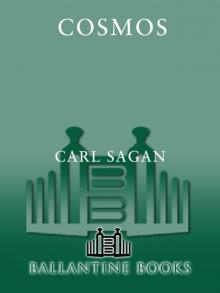 Cosmos
Cosmos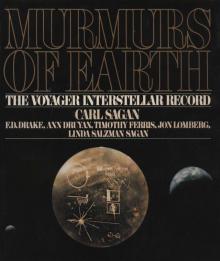 Murmurs of Earth
Murmurs of Earth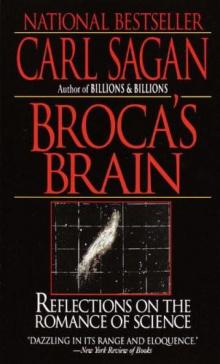 Broca's Brain
Broca's Brain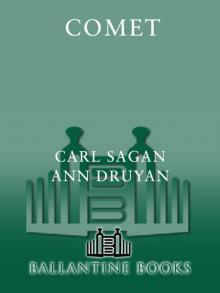 Comet
Comet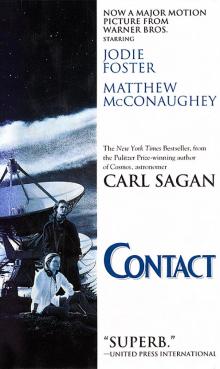 Contact
Contact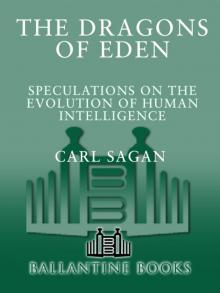 Dragons of Eden
Dragons of Eden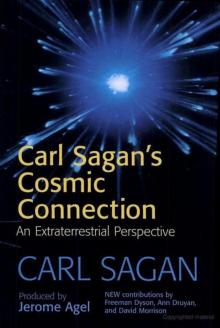 Cosmic Connection
Cosmic Connection Shadows of Forgotten Ancestors
Shadows of Forgotten Ancestors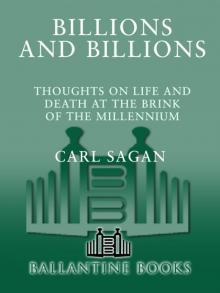 Billions & Billions
Billions & Billions Comet, Revised
Comet, Revised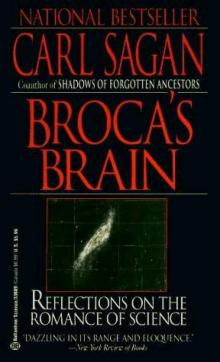 Broca's Brain: The Romance of Science
Broca's Brain: The Romance of Science The Varieties of Scientific Experience: A Personal View of the Search for God
The Varieties of Scientific Experience: A Personal View of the Search for God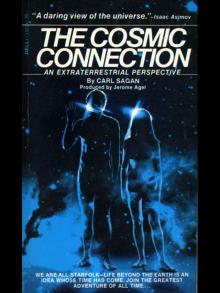 The Cosmic Connection
The Cosmic Connection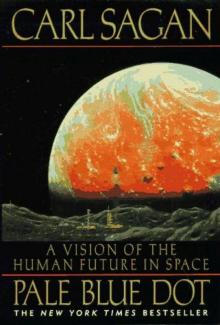 Pale Blue Dot: A Vision of the Human Future in Space
Pale Blue Dot: A Vision of the Human Future in Space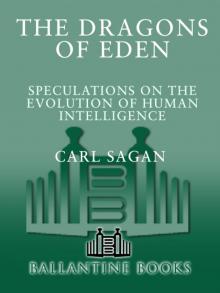 The Dragons of Eden
The Dragons of Eden